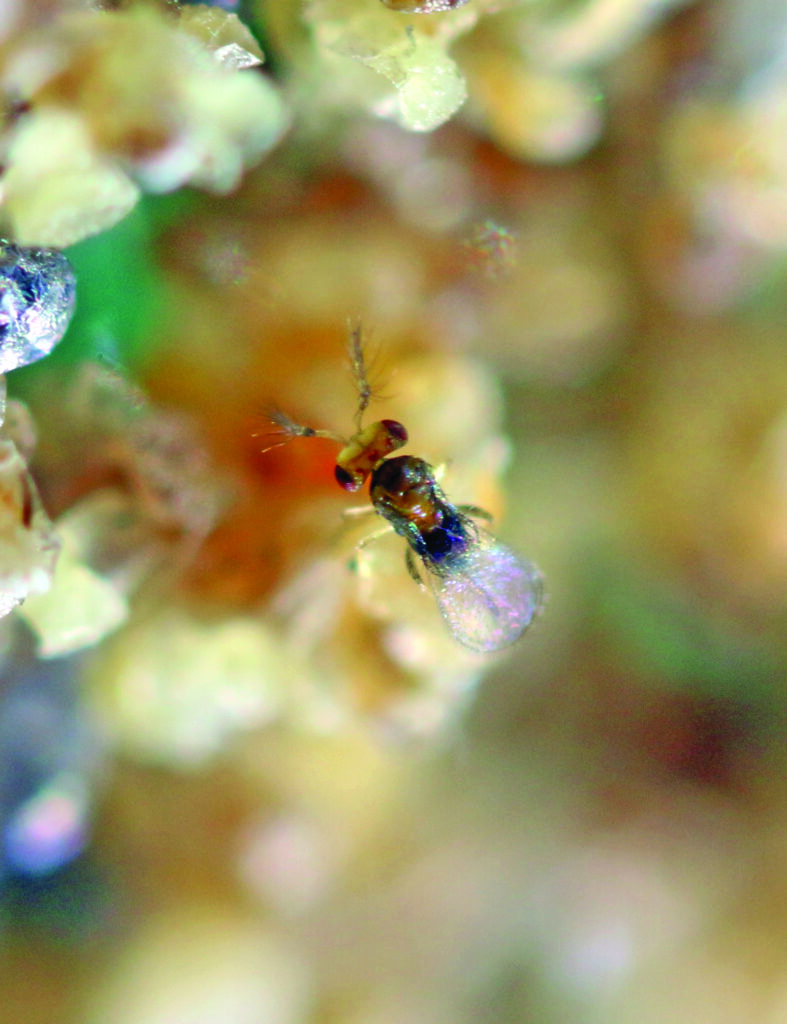
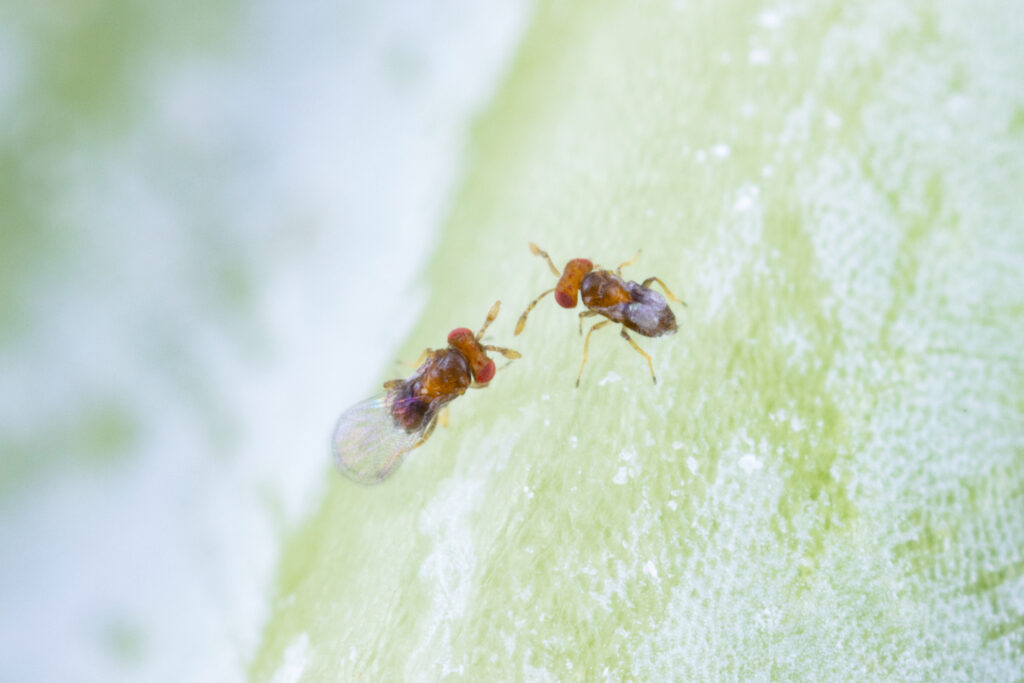
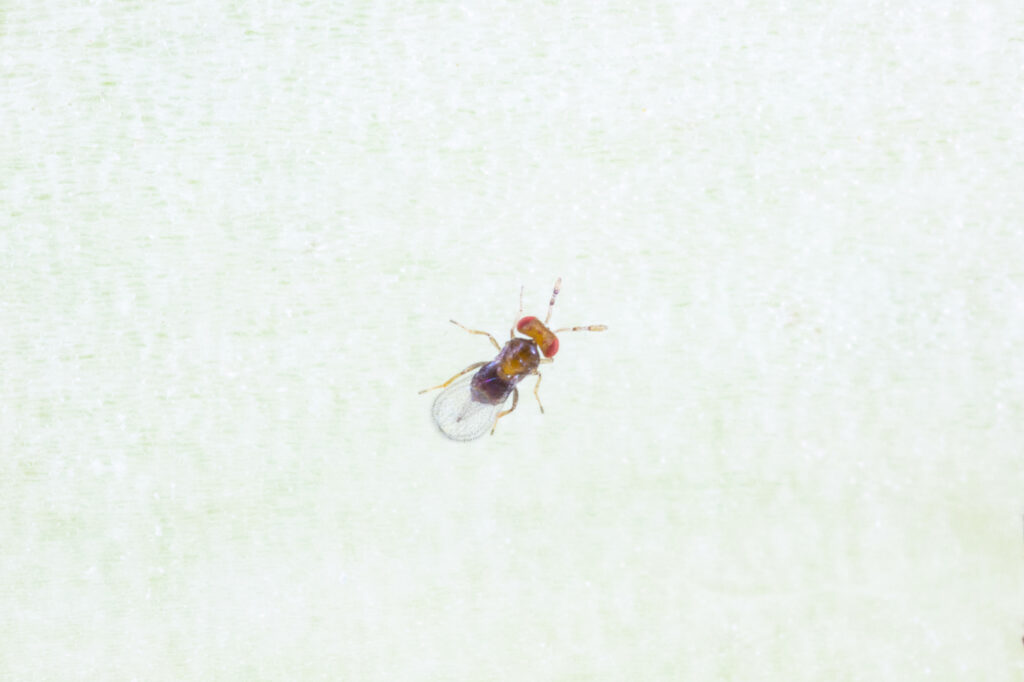
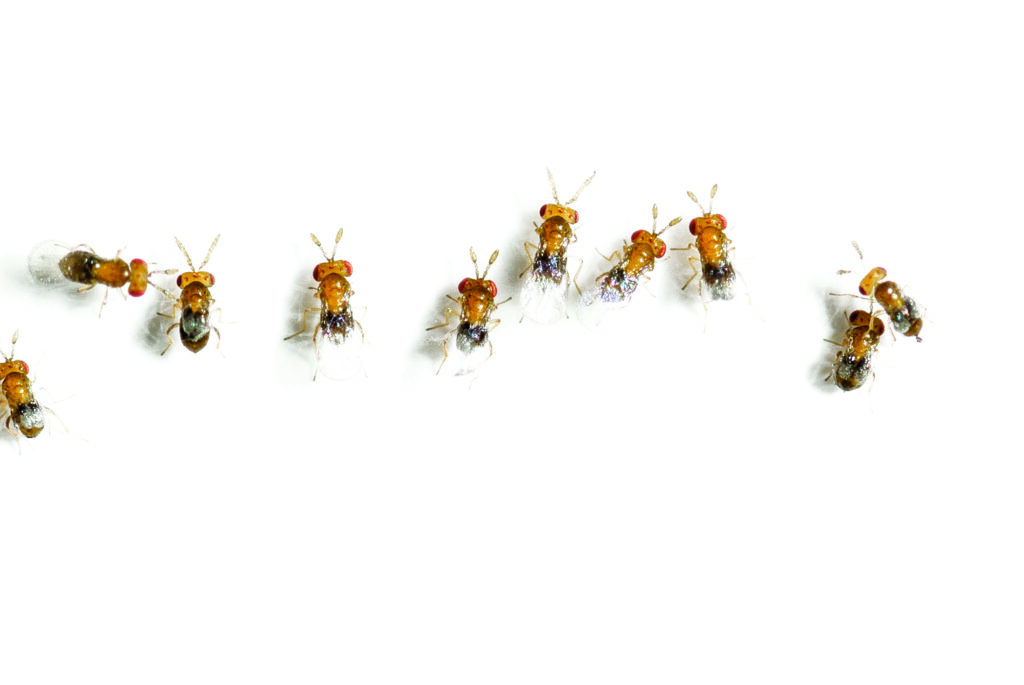
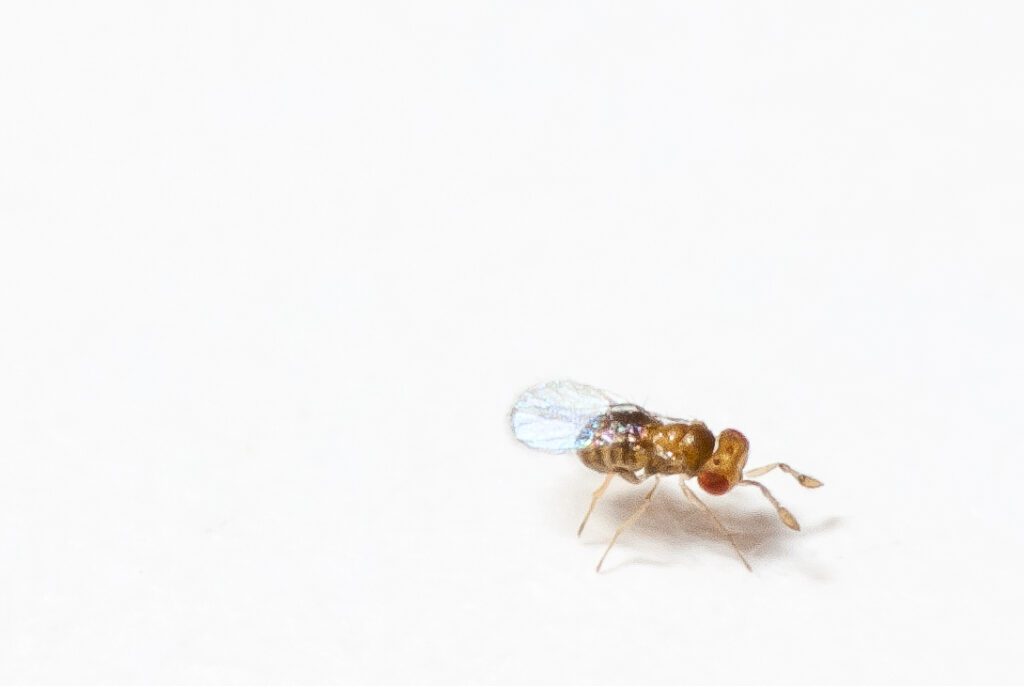
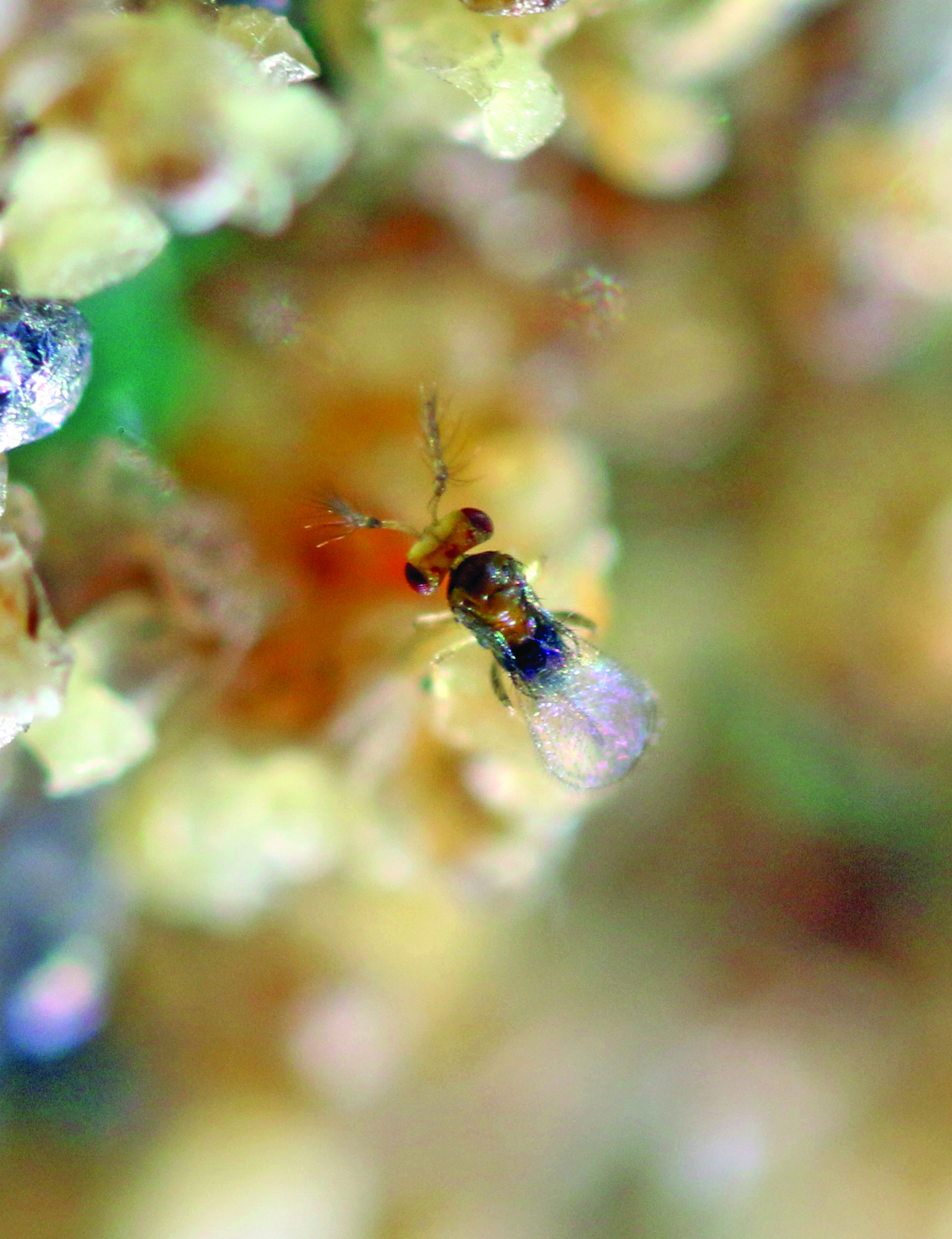
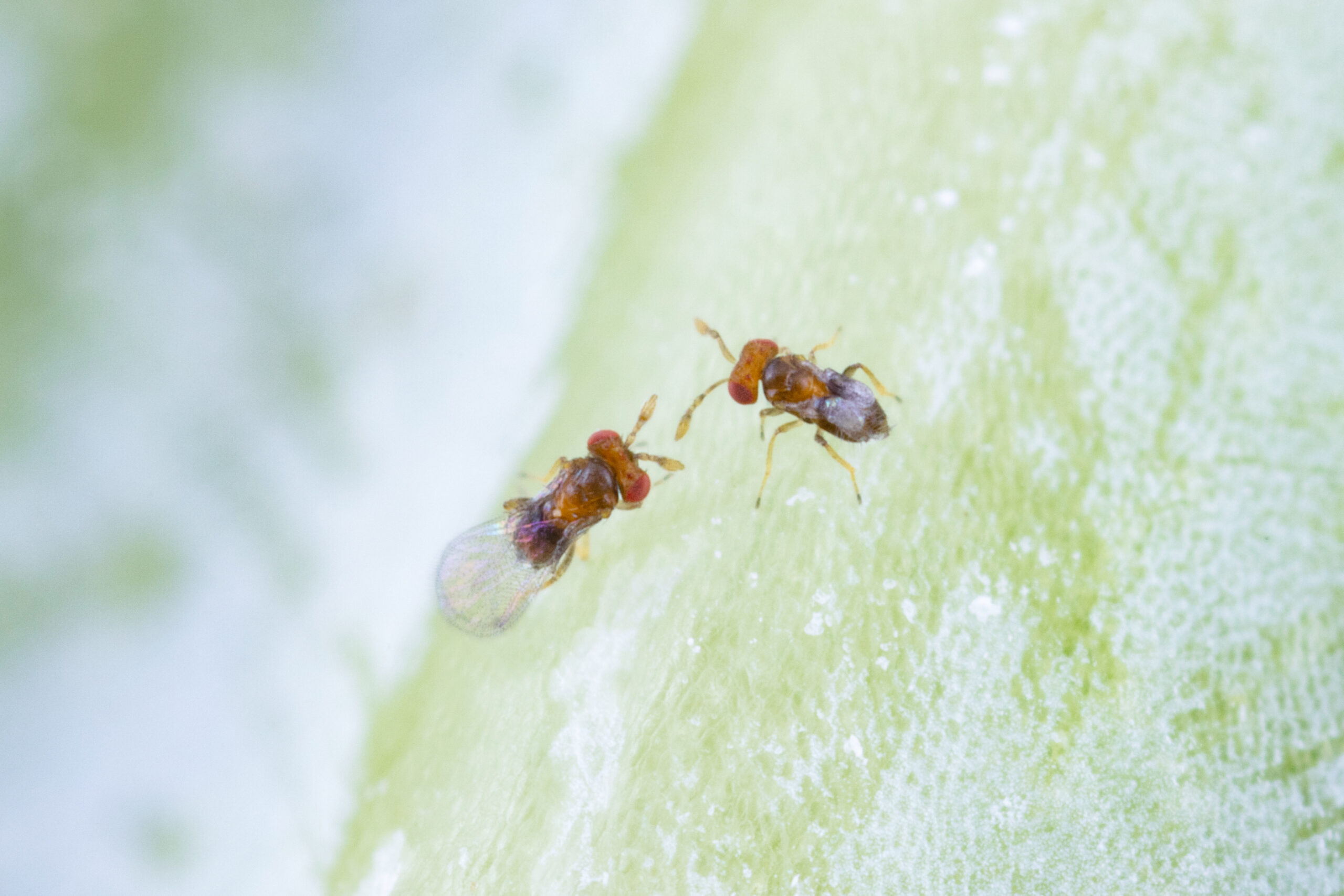
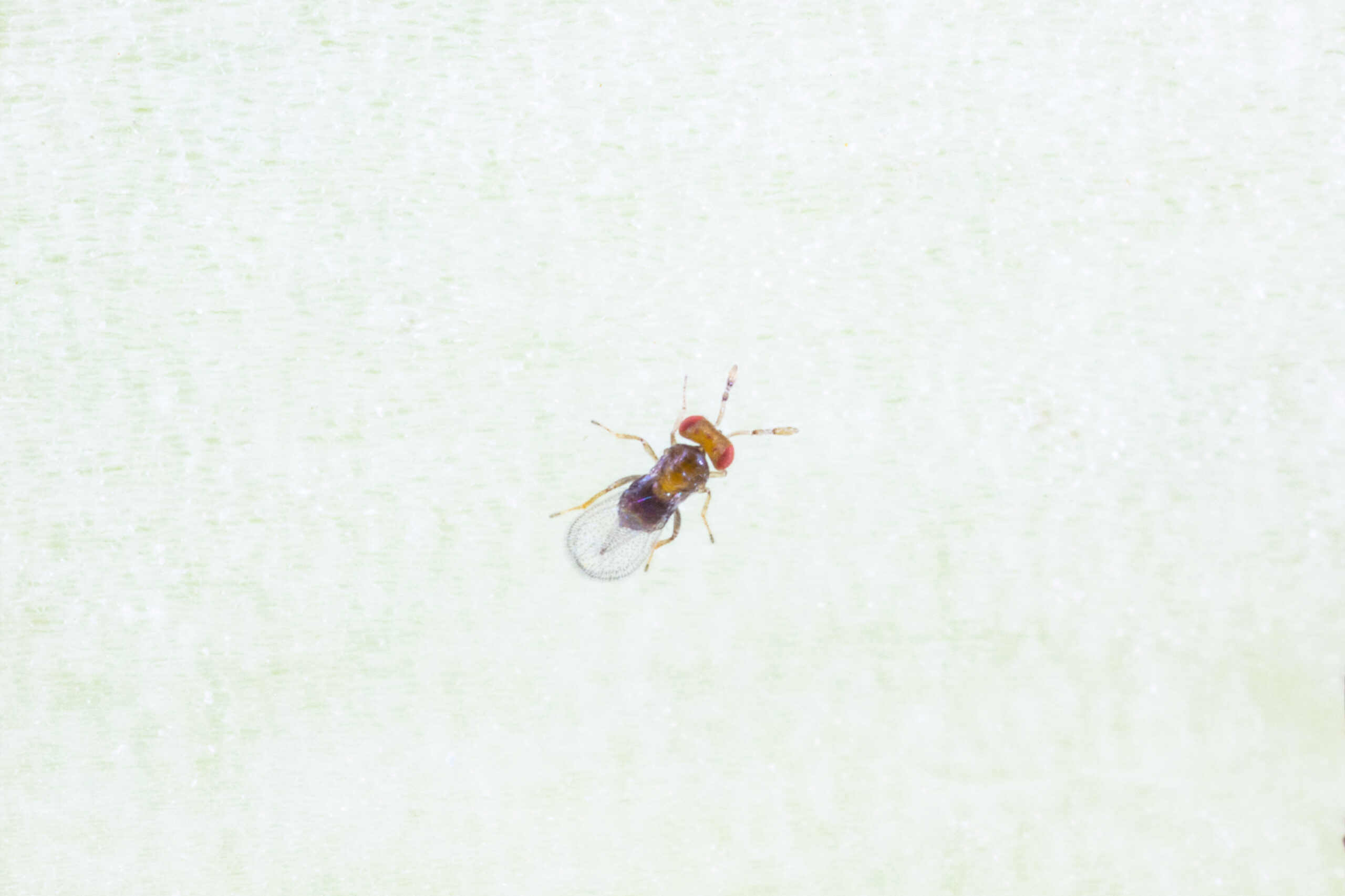
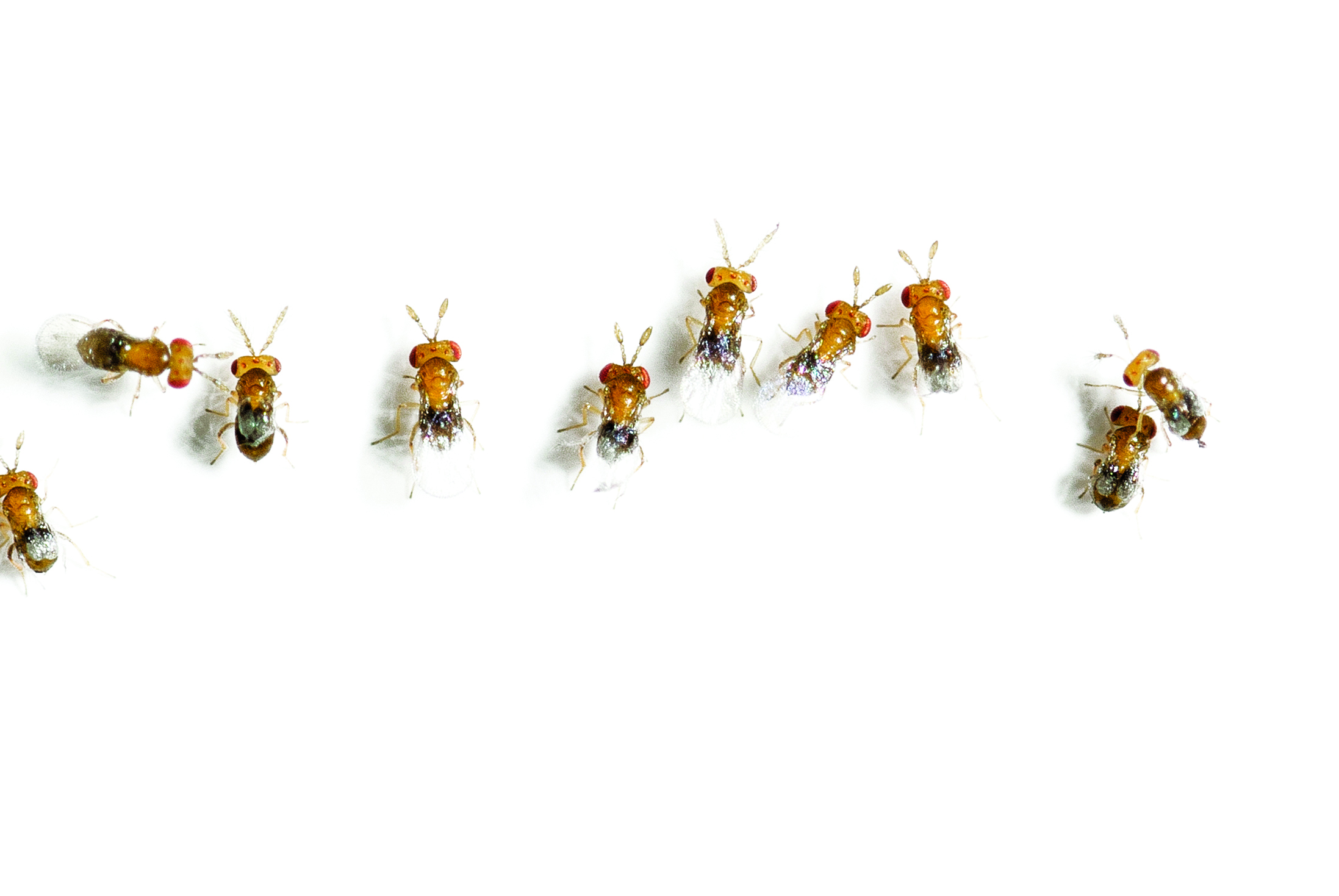
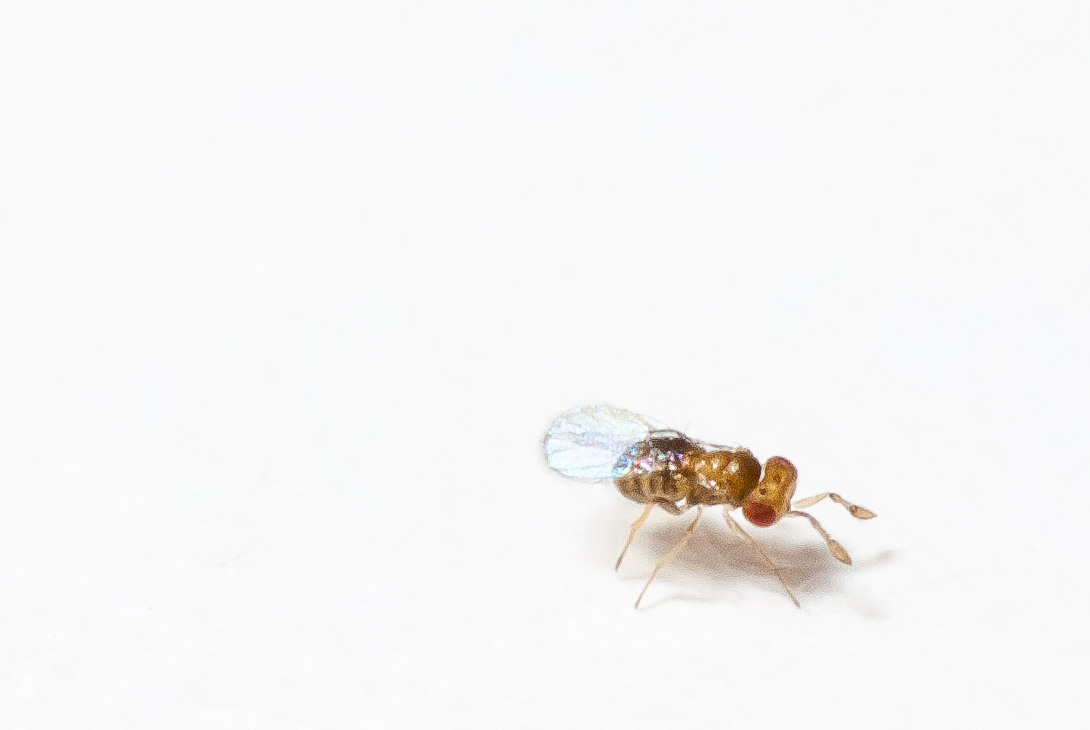
Tricho-Corn®
Product description
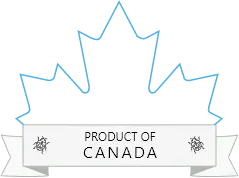

Targeted crops
- Cannabis
- Hemp
- Sweet corn

Targeted pests
- European corn borer (Ostrinia nubilalis)

Application Instructions
To maximize effectiveness, handle the card carefully by its edges. For young plants, attach them 10 cm above the ground using a stick; for larger plants, the cards can be installed at mid-height of the stem. To ensure effective control against the pyralid moth, it is important to introduce trichogramma cards as soon as adult moths are detected – or by mid-June for univoltine generations. For maximum coverage and protection against caterpillars, distribute an appropriate amount of trichogramma evenly in the treatment area. New cards should be introduced every week until the end of the cycle (which usually lasts for five weeks). To avoid a decrease in effectiveness over time, each card should remain in place in its field for at least three consecutive weeks.

Storage Instructions
The cards must be replaced every week for at least five weeks, depending on the pests’ cycle. Never freeze the cards, but they can be refrigerated for a maximum of four weeks.
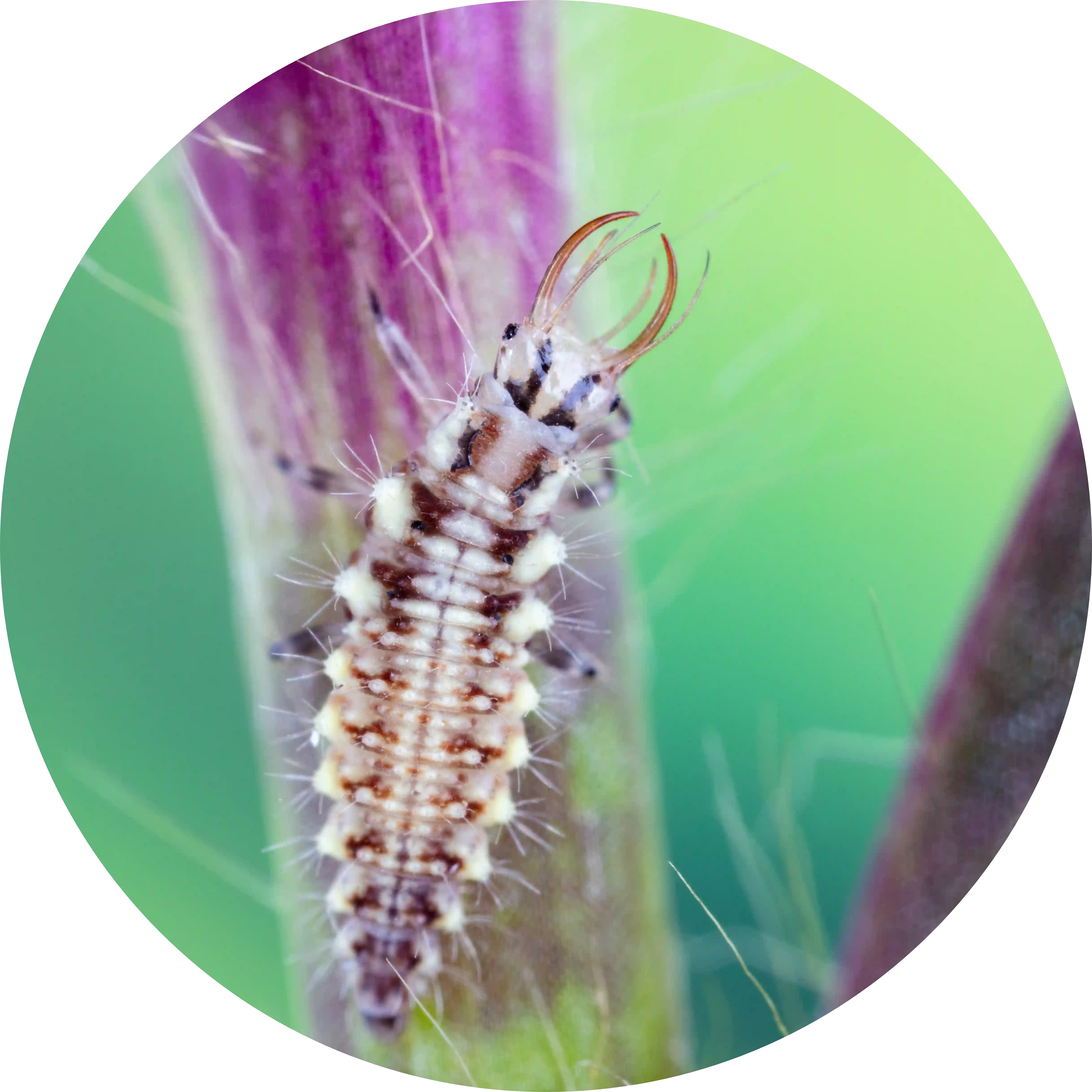





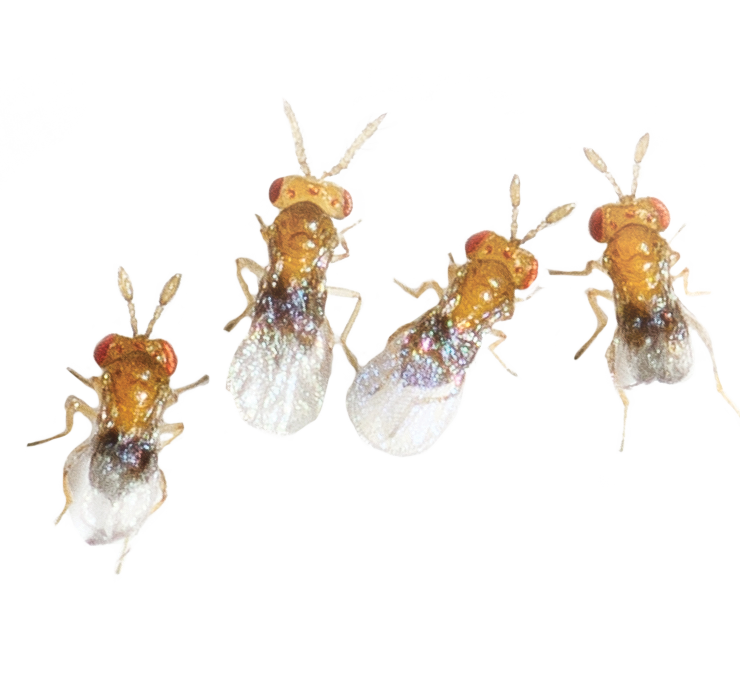
Description
The Tricho-Corn® cards contain nymphs of a small parasitic wasp species called Trichogramma ostriniae, which have been specially selected for their preference to lay eggs in the eggs of European corn borer. In Canada, their use is growing steadily and helps reduce risks to the environment and human health. They contribute to the protection of sweet corn, cannabis, and hemp fields. Once mated, the female searches for freshly laid eggs where she can lay her eggs inside them. The trichogramma larva develops inside the egg and feeds on the future embryo. A new generation emerges after about 2 weeks.
Installing the cards is simple and can be done in various weather conditions (rain, wind, wet soil, etc.).